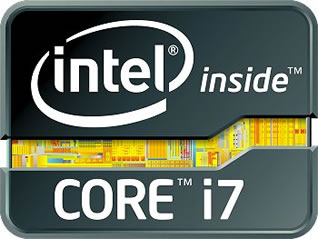Final Thoughts
Three years later, we are finally able to put the X58/LGA1366 platform to rest, in what's virtually been Intel's flagship platform for the entire duration. Sandy Bridge gave the platform a run for its money earlier this year, but in the remainder the platform managed to stay on top and only recently AMD was able to match it with their new FX series processors.
The AMD FX (Bulldozer) launch was pretty disappointing, to put it mildly, and today's arrival of the new Sandy Bridge-E processors does nothing to make AMD's flagship look any more attractive. But as was the case with the Phenom II and the original Core i7, Bulldozer and Sandy Bridge-E are two very different animals that target very different price ranges.
The AMD FX-8150 is currently being listed for around $270 (if you can find stock), while the Core i7-3960X is a bone chilling $990. The Core i7-3930K should deliver a similar level of performance, but even at $555 it's hardly what you would call affordable. It is what you would call half a grand, and that is what you would call almost twice the price of the FX-8150.
Pricing of the Core i7-3820 is yet to be revealed, but we are not crossing our fingers as it shouldn't be much faster than the Core i7-2600K. The only advantage it has is the slightly larger L3 cache and the quad-channel DDR3 memory support. Therefore realistically to get aboard the LGA2011 platform, users will want to grab the Core i7-3930K along with a supporting motherboard and four sticks of DDR3 memory.
For gamers there's very little to see here. The Core i7-3960X is no faster than the Core i7-2600K or even the Core i5-2500K. However when it came to our application and encoding performance tests the Core i7-3960X was a monster. The Excel, Photoshop and encoding gains over the Core i7-2600K were impressive, in the order of 20% or faster.
Going back to the value perspective, assuming for a moment that the $555 Core i7-3930K delivers almost the same performance as the Core i7-3960X, it still costs 73% more than the Core i7-2600K, and in our application/encoding tests we saw a more modest 20-30% performance gain a majority of the time.
Overall the Core i7-3960X delivered as we expected, the letdown comes from the Intel X79 chipset which offers nothing over the Z68. This is going to be a real problem for LGA2011 motherboards, as we expect them to fetch a price premium over their LGA1155 counterparts, yet most will likely be equipped with the same features. This is going to be the Achilles' heel of Intel's flagship platform regardless of the added benefits that are found here and there.
score
Pros: Fastest processor money can buy. Good/Great performance gains. Quad channel memory support, up to 40 lanes of PCIe 2.0 bandwidth.
Cons: Costly (new) platform. Lacking features on the chipset side. Power efficient only to an extent.
